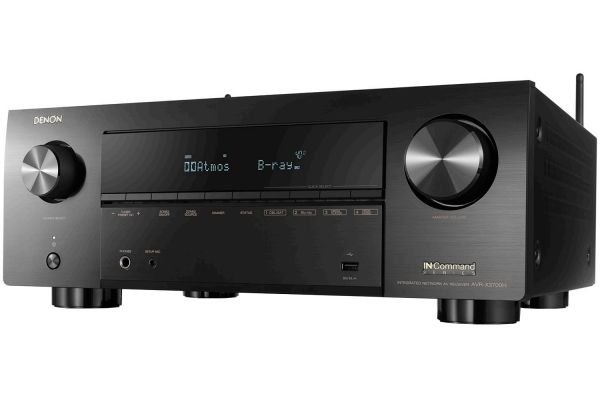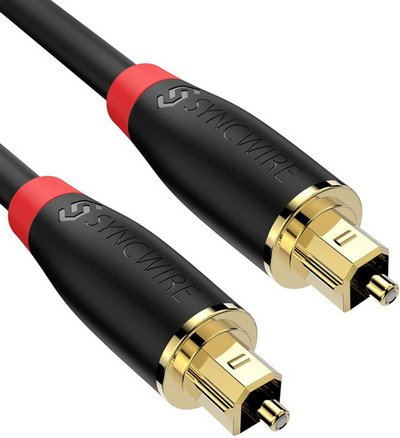Regardless of whether you just bought a new TV and want to hook it up with your sound system, or you want to enhance your audio, you got a TV set and one of the surround sound options. These options will typically be either an Audio/Video receiver with a set of surround speakers or a soundbar. Whatever the case may be, there is more than one way to hook up your sound system to your TV, or vice versa. So, let’s check out those options and figure out what works and what doesn’t.
AV receiver or AVR
If you just bought a new AV receiver, take a look at the back. You will usually find a lot of different input and output ports. These ports are there to allow you connectivity with other compatible devices. You can use them to send the audio or video signals from the receiver to your TV, speakers, etc. Now, considering you are using an AV receiver, you can connect it with TV in two different ways. You can either use your AV receiver as a source of the video signal you can then send to the TV or use your TV as a source and send the audio to the AV receiver. These choices may be up to you or the available ports, so let’s check them both out.

Video from AV receiver to a TV
If your AV receiver and your TV have an available HDMI ARC port, you can use it to send the video to the TV and then get audio back to the receiver. ARC stands for Audio Return Channel. It is used to achieve two-way audio communication between the TV and AV receiver. This standard will, in most cases, allow you to control your receiver with a TV remote regarding volume, as well as turning your receiver On and Off when you turn your TV. For this to work, you need to plug your AV signals sources, such as TV box, Chromecast, Fire TV, Blueray, game console, or any other HDMI compatible source, into your AV receiver’s HDMI input ports. That will bring both audio and video signals from that source to your AV receiver. Now you need to send the video to your TV. You will do this by using a high-speed HDMI cable. You can buy these cables pretty much anywhere nowadays. Just check the package or the cable’s specifications to be sure you got the right one. Now plug one end of the line into your HDMI ARC OUT port of your AV receiver and the other end into HDMI ARC IN of your TV. Make sure you put the cables all the way in on both ends and secure the connection.
After you’ve done a hardware part of the process, go to the TV settings and scroll to the options until you find HDMI ARC or, on some TVs, CEC.
Make sure your TV has detected your AV receiver and that HDMI ARC/CEC is enabled.
From now on, when and if you want to watch something, you will select a proper HDMI port/source on your AV receiver. That signal will be passed to the TV, and then audio will be returned to the receiver and sent to the speakers. HDMI ARC is probably the best and preferred way to connect the TV and your Surround system through the AV receiver. You can do this the other way around as well, so let’s check it out.
Audio from TV to AV receiver
If you don’t have HDMI ARC ports available on both ends, you can send only audio from your TV to your audio system. Depending on your TV and receiver model, you should have one or more options to do this.

The first option is to use TOSLINK optical cable as your connection. Toslink is a standardized optical cable connection developed by Toshiba (Toslink =Toshiba Link) and is commonly used by many devices. You can recognize it by the label “optical” on the port. More often than not, you will find those ports covered by the rubber or the plastic cap for protection against dust and other small particles. This debris can contaminate the port and prevent the connection from working correctly. You will also find the ends of the cable protected by the cap. Remove the protective cap, align the connector’s shape with the port’s profile, and firmly insert until you hear the clicking sound.
When you plugged the cable into both ends, make sure your TV is set to play audio on external speakers. You should also set your AV receiver to play from optical cable input. If you don’t do this in the settings, you might have no sound or sound from both AVR-connected speakers and your TV speakers. There is also an alternative optical cable standard and port – Digital coaxial cable. It will work similarly. Choose your optical connection depending on what your TV and AVR have built-in and supported.
Soundbar
Things look pretty similar if you use a soundbar. However, there are a few differences depending on your type and model.

The first option is HDMI ARC. It works the same as described above. But keep in mind that if your soundbar has more than 5.1 speakers setup, make sure you are getting a signal to the soundbar from the source and then passing the video to the TV. Use this order to avoid signal compression and losses you would get by squeezing the 7.1 signal through the standard that supports only 5.1, allowing you maximum possible quality. You will have to think about this only with high-end soundbars, but it is worth mentioning, so you don’t end up being disappointed.
Other options to connect your soundbar are the same as for your AVR. Depending on what you have supported and available on both ends, you can use “Digital optical” or digital coaxial. But beware as those don’t support Dolby Atmos and DTS:x, and you are limited to compressed 5.1 channels signal.
SUMMARY
To connect your TV and surround system, you need to find out what your supported and available ports are on both ends. To get the best quality sound, you should bring the signal to the AVR or soundbar first and then pass it to the TV.
The best option to connect the audio system to the TV is HDMI ARC. If ARC is not supported or available, use the TOSLINK optical cable. Alternatively, use a digital coaxial that works in a similar fashion but provides a bit lower quality of the signal than the TOSLINK.

